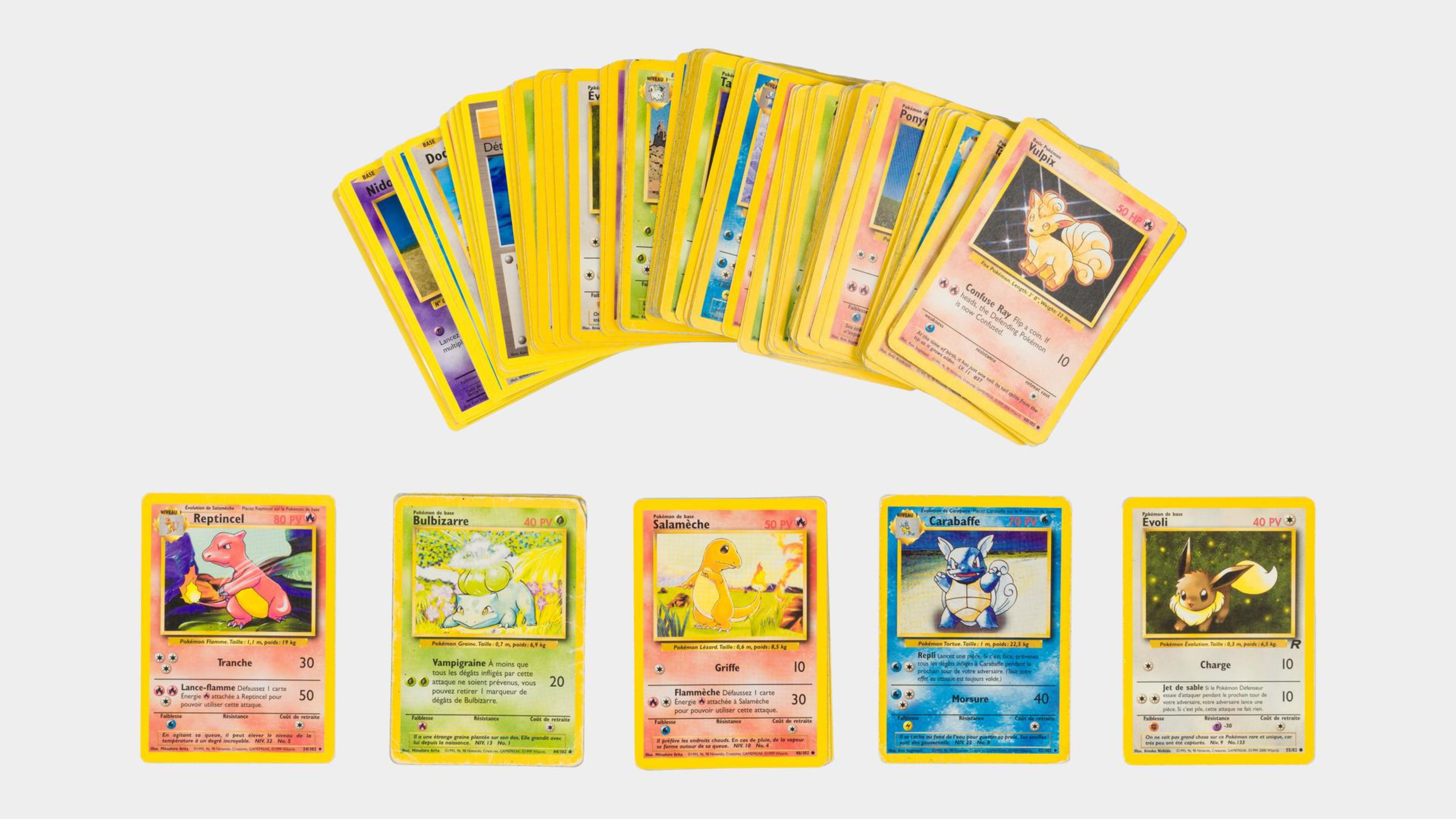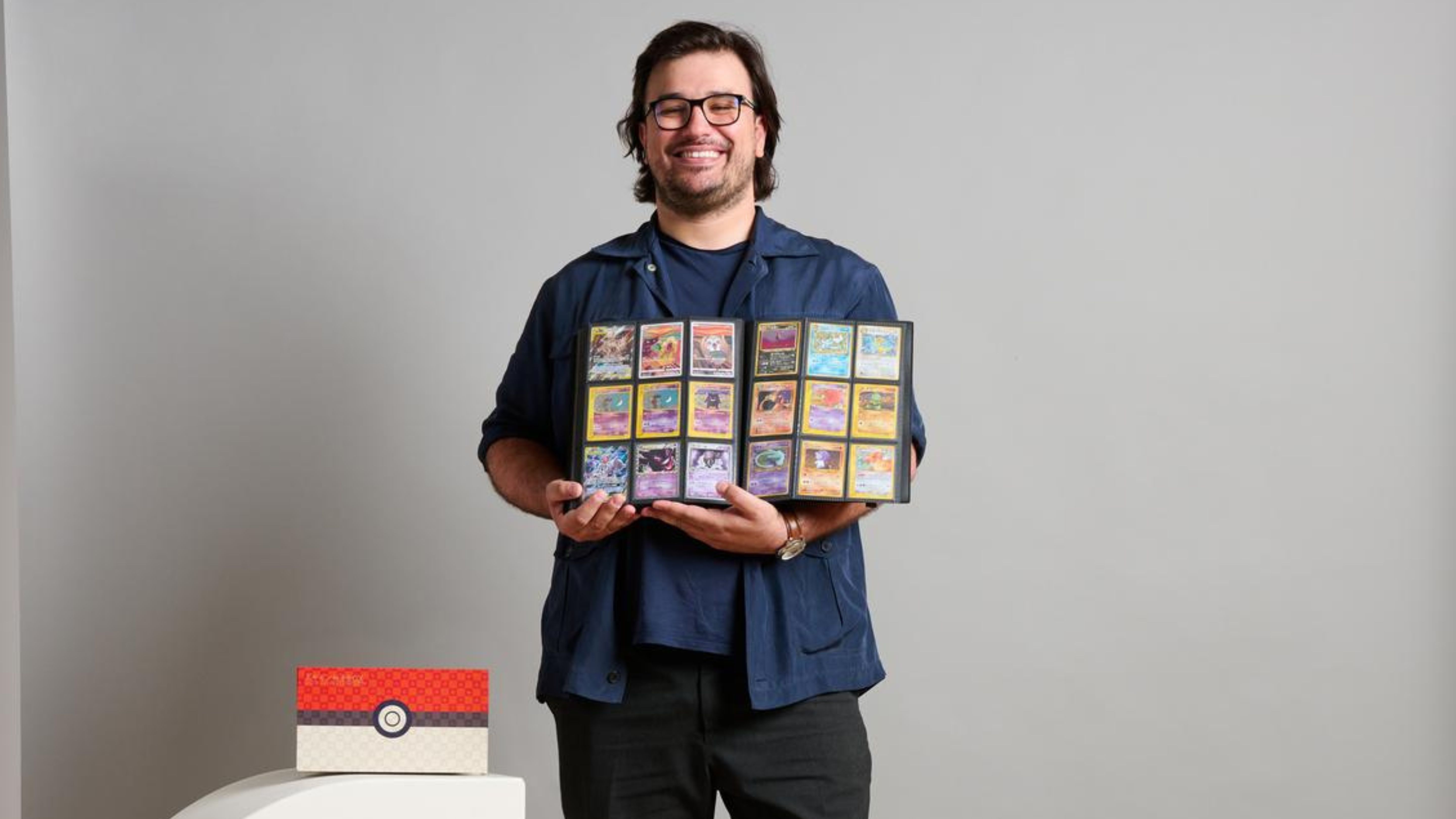Written by Callum Booth | 5 November 2024
Are you filled with the urge to catch ‘em all? To travel across the land, searching far and wide? And, in the process, build your very own Pokémon card collection? Then you’ve come to the right place, because we’re going to help you take your first steps on this momentous journey.
The Pokémon trading card game (or Pokémon TCG for short) began back in 1996, meaning its thirtieth birthday is just around the corner. And, just like any soon-to-be 30-year-old, Pokéon TCG has packed a lot of living into that time. This makes it particularly daunting for people new to the game, as there’s simply so much to learn and so many cards out there.
But don’t you worry, because this guide will help you start your Pokémon TCG journey.
Begin with the basics: Learn the differences between the cards
If you want to build up a Pokémon card collection, you first need to understand the jargon and what different types of terms mean. With that in mind, let’s begin by breaking down how specific cards differ.
Graded vs. ungraded: Grading is a process where a professional company analyses the condition of the cards and gives them a rating on a scale of one to 10. In this, one is in the worst condition, while ten is technically flawless. So flawless, in fact, that there’s only a small chance a card in a booster pack will be given a grade of 10. The grade is often referred to as PSA (for example: PSA 5) after the system that determines the grades.
First edition vs. unlimited cards: This is a term you’ll hear a lot in the world of Pokémon TCG. The most sought-after cards are those from the first edition, which is the initial print run of the game. Any cards after that are referred to as unlimited cards.
Regular vs. holographic cards: Sometimes referred to colloquially as “shinies” or “shiny” cards, holographic Pokémon cards have a particularly alluring foil sheen to them. This means when they move in and out of light, they seem to almost glitter. Regular cards, on the other hand, have a more matte surface.
These are the main differences that you’ll first encounter when you enter the world of collecting Pokémon cards. Next, let’s look at how different characteristics impact the price of cards.
What elements determine a card’s price?
Not all Pokémon cards are equal, and spotting the difference between a valuable card and a cheap one is vital for any budding collector. Here are the most important aspects that influence your Pokémon card value.
Condition: To begin with, the better condition a Pokémon card is in, the higher its value will be. Not rocket science, but it’s a useful foundation to build from.
Grading: Following that, cards which have been professionally graded will be worth more than those that haven’t. This is because there’s a precise guarantee of the Pokémon card’s quality. On top of that, the higher graded a card is, the more expensive it will be.
First edition cards: As these came from the original print run of Pokémon TCG, first edition cards are highly regarded, meaning most of the time they fetch a much higher price than unlimited cards, which make up most of the Pokémon TCG roster.
A 1999 Charizard 1st Edition Base Set card (in the middle) grade 9, is worth around €23,000,-
Holographic, full art, and other rare cards: There are often special cards released into the Pokémon TCG world, including holographic variants and those with artwork covering the entire surface. Often, these are worth more than their regular counterparts.
Name value: Some Pokémon cards are worth more simply because they are in higher demand among collectors. Two such examples are Charizard and Pikachu. These are both popular creatures within the Pokémon world, so will cost more than other similar cards. Think of it like sports cards, certain players like Messi and Christiano Ronaldo attract more attention, and therefore memorabilia involving them costs more. The same goes for Pokémon cards.
Language: Generally speaking, English cards are the most valuable from all the markets — but this isn’t always the case. There are a variety of instances where the Japanese language cards are incredibly desirable, and therefore expensive, especially if they’re part of a limited edition and are unavailable in other parts of the world.
Check out the rare gems in our Exclusive Pokémon Collection
Which set should you collect first?
First things first, it’s important to note that there’s no hard and fast rule when it comes to deciding what set of Pokémon cards you want to collect. Despite saying that, some tips can push you in the right direction.
Pokémon TCG releases are grouped into series, with the current iteration being Scarlet and Violet. As part of these, the company releases expansions. These are sets of cards that fall into a specific theme, with some of the latest being Stellar Crown and Shrouded Fable.
To begin with, the best way to start your collection is to select one specific expansion and focus on completing that. Choosing this is a matter of personal preference, depending on whether you like the included creatures, art style, and thematic elements.
One of the most popular in recent years has been Crown Zenith but you may prefer other expansions, so research the cards on offer in each before making a call. Ideally, though, it’ll be a recent(-ish) expansion, as the newer the set, the easier it will be to get a solid supply of the cards.
When it comes to completing an expansion, the best way to proceed is by picking up a booster box or two. These are a group of booster packs which contain Pokémon cards from that specific expansion. After going through these, you should be able to sell any duplicates you don’t want, as well as pick up the remaining cards from the set as singles.
But don’t feel compelled to just collect a set though, there are other ways to indulge in your Pokémon TCG hobby too. For example, you can choose to collect a single Pokémon across multiple expansions (like Blastoise), a certain type of Pokémon (like fire creatures), pieces drawn by a single artist (such as Komiya), or even error cards, which are units that come with a factory error.
When it comes to collecting, the (Pokémon) world is your oyster.
How to check the market value of your Pokémon cards
At this point in your journey towards an overflowing Pokémon TCG collection, you should have a good understanding of the most common terms and what factors make cards valuable. That, though, won’t be enough by itself to feel comfortable actually buying cards.
Although you can make a judgment call, it’s vital to get more solid data on how much a card should cost, not how much it’s listed for on the website in question. While certain platforms, such as Catawiki, have experts to curate what’s on sale and ensure a fair price, this isn’t the same everywhere. And in any instance, it’s vital to research before splashing out.
The easiest way to make sure you’re getting a respectable deal is by using TCGPlayer. Here, you can not only discover the current market rates, but also the historical cost of cards, meaning you have some insight into whether you’re getting a good deal or not. This isn’t a surefire way of making sure you’re getting a bargain — grading and condition play a big part, remember — but combined with the tips above, it should help you begin your collection without overpaying or losing out.
How to take care of your Pokémon cards
So, you’re now building up a proper Pokémon TCG collection? Perfect — but it doesn’t stop there, you need to properly look after your new purchases. Ideally, you have to make sure your Pokémon TCG collection remains in the best condition possible.
To begin with, the simplest way to do this is to make sure that all your cards are sleeved. These are plastic outer shells you slip over them, protecting your precious Pokémon from fingerprints, spillages, or any sort of bad luck. You can then put these into a toploader, which is a rigid plastic container, which will give your cards even more protection.
Then you need to consider storage. Those cards aren’t going to order themselves! The two most popular methods are deck boxes, which are cases you can fit your cards in, and binders, which are useful if you’d like to display your cards.
The environment you store your cards in is important. Try and keep them somewhere cool and dry, to stop degradation over time. If you’re going to be collecting cards, how you care for them is just as important as how you buy them.
Finally, join some Pokémon communities
The Pokémon trading card game has a thriving community, and we recommend you get involved as soon as possible. This can be for a few reasons. It can be to get inspired about your own collecting journey, to understand the trends currently impacting the market, or even just to get advice from other people in the scene.
The easiest way to do this is to head online. There is a raft of subreddits out there, including the general-focused /r/PokémonTCG, the trading-specific /r/pkmntcgtrades/ and the collector’s dream /r/pkmntcgcollections. These are great places to expand and refine your Pokémon card knowledge.
Another option is to find local clubs. Visiting a nearby store or meetup is an excellent way to trade with people, check out new cards, and learn more about the market.
Mickael Molé, trading card expert at Catawiki, suggests that you – above all other things – should just have fun with it.
“Pokemon is all about sharing and trading. Inform yourself about the cards, talk to other people in the community and connect to them. And, most importantly, collect what you love, don’t just think about the investment.”
Mickael Molé, trading card expert at Catawiki
Ultimately, collecting Pokémon cards is a journey. By taking things slow and steady, and following all the tips in this article, you’ll soon have all the knowledge you need to become a Pokémon TCG master. Good luck with becoming the best there ever was!
Explore our Collection of Pokémon trading cards



